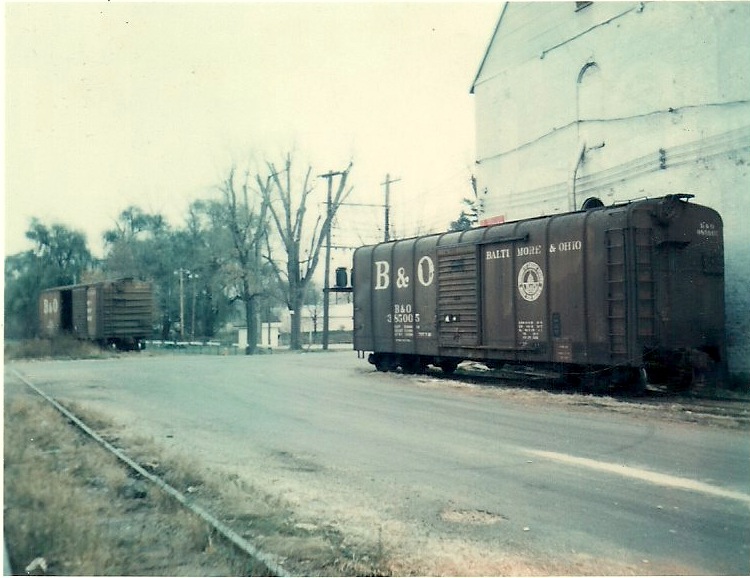I’m only speculating but I strongly believe it was due to the fact the elevator wasn’t set up to load covered hoppers. The discharge chute was designed for boxcars and too low for roof top loading. I imagine the owner looked at his records and saw a decline in rail car loadings compared to an increase in trucks and the numbers involved didn’t support an upgrade to the machinery. A semi and grain trailer could load off the existing system as easily as a boxcar, so why spend the money?
As I said that’s pure guesswork on my part, but I believe it makes sense knowing the era and the changes I witnessed and have learned about since.

The loading machinery for the elevator in Centerville wasn’t designed for covered hoppers.
During that time the number of farms declined by half before leveling off and more farm sales and consolidations took place than at any point previously in US history. In addition, farm population dropped from 20 million in 1950 to less than 10 million in 1970 even as the average size of family farms increased from 205 acres to almost 400 in 1969.*
The reality of two wars (Korea and Vietnam) took young people away from the farm in large numbers and not everyone who came back returned to farming. These factors and many others impacted life in farm country and the support structure that sustained it. Small elevators like this one were still viable businesses but underwent changes of their own due to larger economic forces.

If you’re modeling the 1960s or early ‘70s can you picture such a model, complete with track, yet not treating it as an active customer during an operating session? I strongly suspect most of you can’t. The temptation to use it would be too strong. Why model such an industry and not get any play value from it? The very question seems unthinkable. Yet, that’s part of the reality I witnessed. The siding remained long after rail service ended.
The human factor behind the eras we model is something we seldom consider. We zero in on the railroad: the track went here, the building was there and the train did this. We spare no effort to capture the surface appeal, yet ignore the reasons why that scene is the way it is.
How many of us consider the larger picture of the era we model? The railroad didn’t operate in isolation, yet that’s how we treat it. As modelers we don’t have to make up scenarios to justify our choices. History has done that for us, we simply have to understand the reasons why behind the what. Railroading was and still is a business driven by economic forces that impact everyone in the country.
To close, I suggest that there is more to modeling a familiar location or era than we usually consider. From the comments of last week, I agree with Chris’s assertion that a literal translation may lack the depth of emotion one may have about a place. His statement that the modeling is static while our memories aren’t is a brilliant insight. It’s one of several reasons why I don’t model Centerville or Richmond.
Instead, I focus on the qualities that inspired those memories and the train operations I find meaningful to reflect and tell my story of those times and place.
What’s the story your modeling wants to tell?
Regards,
Mike
The location I’m modeling had a depot in operation in 1970, boarded up by 1971 and torn down by 1972. I keep being torn at which of these three years I want to narrow my focus down on ( or even a later 70’s year).
I would hate to make a similar decision with a rail service building.
It’s an interesting dilemma isn’t it Craig? It also points out how entrenched certain ideas are within the craft; ones that we don’t even think to question.
Yep you are completely right. I keep thinking maybe for my situation, I can build the model and then as it fades from natural weathering ( outdoor layout), board up the windows. Then after the wooden structure finally falls apart, tear it out and move on much like the prototype.